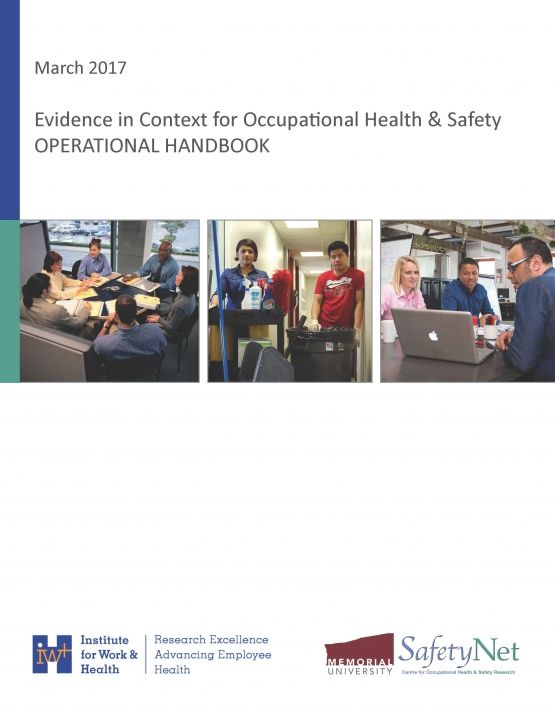This handbook outlines the key steps required for the production of a contextualized evidence synthesis. For each step, the handbook provides guidance about the resources required and the options available to you. It also provides concrete examples to make each step easier to understand, as well as strategies to address the issues that typically arise in the process. By following the steps outlined in this handbook, stakeholders should be able to identify ways that will work in their context to improve the prevention of work injury and illness, or the prevention and management of work disability.
The handbook was prepared by the Institute for Work & Health and the SafetyNet Centre for Occupational Health & Safety Research at Memorial University, and was supported by a grant from the Research and Workplace Innovation Program (RWIP) of the Workers Compensation Board of Manitoba.
Who should use this guide
This handbook is designed to be used by stakeholders seeking to improve policy and/or practice related to occupational health and safety, disability prevention and return-to-work by applying the results of a research synthesis to their particular situation. For example, stakeholders may include policy-makers contextualizing evidence for their jurisdiction, or employers and worker representatives contextualizing evidence for their sector or workplace.
